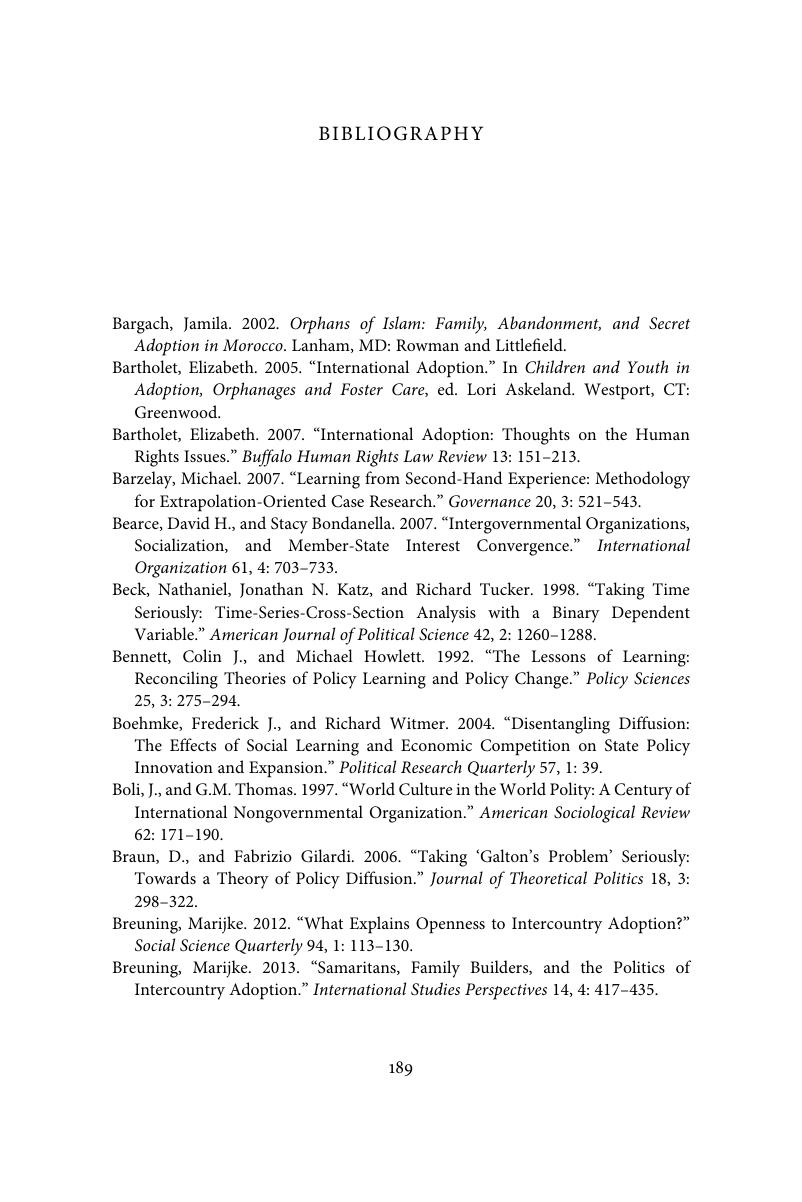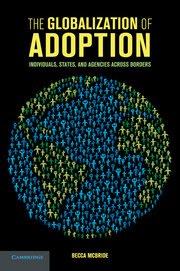Book contents
- The Globalization of Adoption
- The Globalization of Adoption
- Copyright page
- Contents
- Figures
- Tables
- Graphs
- Book part
- 1 The globalization of intercountry adoption
- 2 The policies and practices of intercountry adoption
- 3 A theory of the diffusion of intercountry adoption
- 4 Data to investigate global trends in intercountry adoption
- 5 Why do states allow foreign adoption?
- 6 How do states choose partners for intercountry adoption?
- 7 The future of intercountry adoption
- Book part
- Bibliography
- Index
- References
Bibliography
Published online by Cambridge University Press: 05 July 2016
- The Globalization of Adoption
- The Globalization of Adoption
- Copyright page
- Contents
- Figures
- Tables
- Graphs
- Book part
- 1 The globalization of intercountry adoption
- 2 The policies and practices of intercountry adoption
- 3 A theory of the diffusion of intercountry adoption
- 4 Data to investigate global trends in intercountry adoption
- 5 Why do states allow foreign adoption?
- 6 How do states choose partners for intercountry adoption?
- 7 The future of intercountry adoption
- Book part
- Bibliography
- Index
- References
Summary

- Type
- Chapter
- Information
- The Globalization of AdoptionIndividuals, States, and Agencies Across Borders, pp. 189 - 196Publisher: Cambridge University PressPrint publication year: 2016



